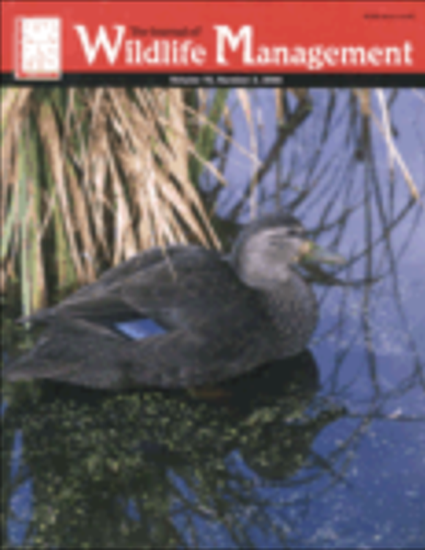
Article
Forage Production and Nutrient Concentrations in Thinned Loblolly Pine Plantations
The Journal of Wildlife Management
(1982)
Abstract
Relationships between forage production and overstory structural characteristics were studied in 20-35-year-old old-field loblolly pine (Pinus taeda) plantations in the Virginia Piedmont. Forage production was predicted as a function of overstory basal area, overstory canopy cover, and slope position (R2=0.75) Forage production in the 0-2 m stratum ranged from 154 to 1,690 kg/ha, being highest in open-canopied, moist sites and lowest in closed-canopied, dry sites. Crude protein concentrations, caloric values, and digestibilities of forage plants were not apparently related to overstory or site characteristics. Total production of energy and protein for white-tailed deer (Odocoileus virginianus) forage species were strongly associated with total forage production. Digestible energy production ranged from 449 to 2,753 kcal/ha, and crude protein production from 24.6 to 142.4 kg/ha. these results indicate that the potential of loblolly pine plantations to provide the nutritional needs of wildlife species is highly variable, and is strongly influenced by thinning.
Disciplines
Publication Date
1982
DOI
10.2307/3808564
Citation Information
Terry L. Sharik. "Forage Production and Nutrient Concentrations in Thinned Loblolly Pine Plantations" The Journal of Wildlife Management Vol. 46 Iss. 3 (1982) p. 719 - 727 Available at: http://works.bepress.com/terry_sharik/146/
